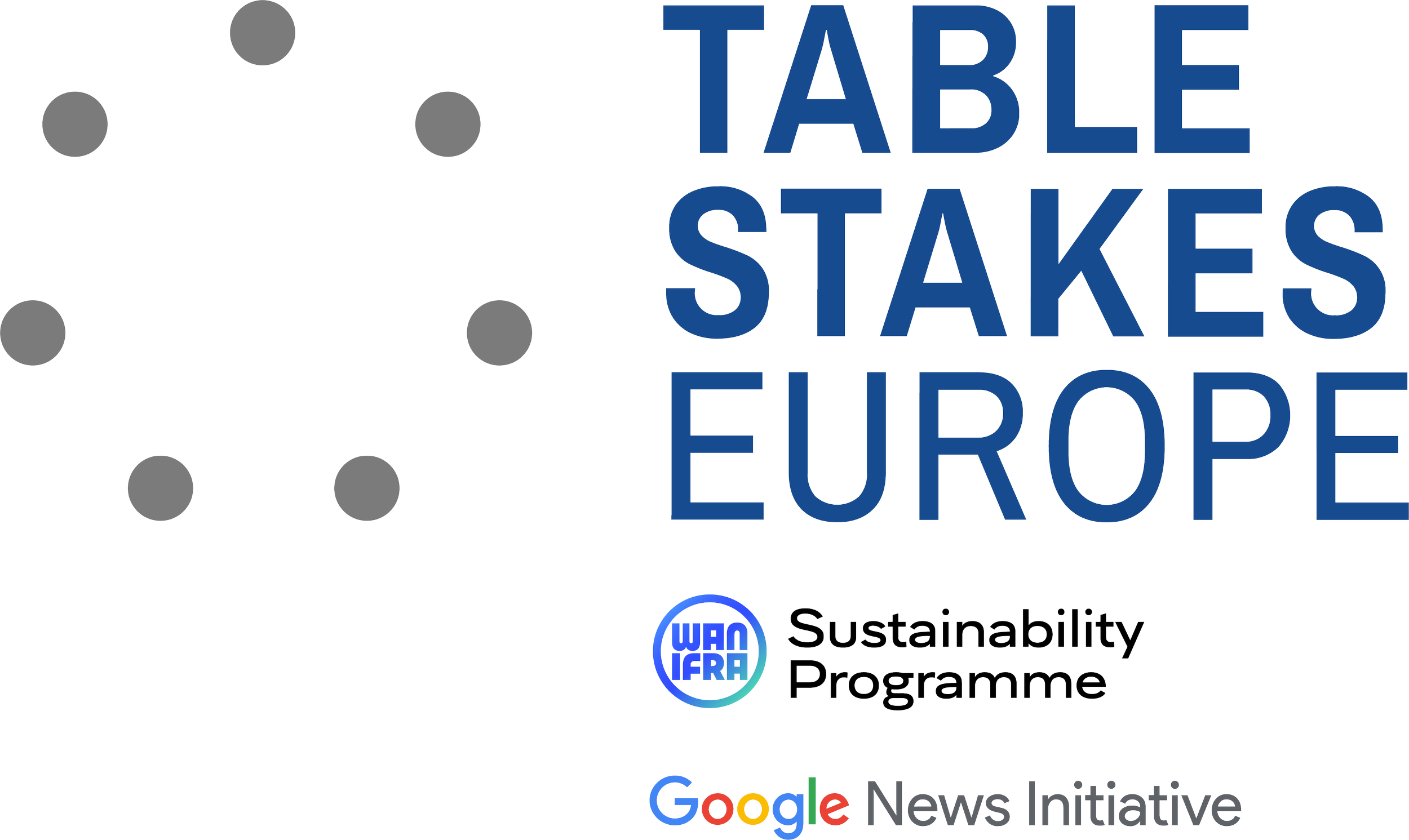How it works
Table Stakes Europe provides an opportunity for publishers to recognise and make significant progress against the challenges that confront them in the process of digital transformation while placing audiences and quality journalism at the very heart of its approach. With the support of their peers, coaches, the TSE team, and topic experts, teams are able to set themselves on a path to success.
The 7 Table Stakes to Be in The Game
Ready, set, Table Stakes
So you are ready to take the next step in your organisation's digital journey - how do you figure out exactly what challenges your organisation needs to address? Well, first, teams must conduct an honest and comprehensive assessment of how their organisation stacks up against the qualities and practices of a successful audience-first newsroom. This process is called gap analysis and it is crucial to helping teams identify the gaps that they will work to improve upon throughout the year. Along with the gap analysis, teams must learn to distinguish between making decisions based on actual knowledge and making decisions based on assumptions. This assumptions vs. knowledge assessment is useful in allowing teams to really evaluate what they truly know about their audiences or their own newsroom and what was simply conjecture. The kickoff session of the Table Stakes programme gives teams the toolbox they need to get started on these steps and, with discussions alongside their coaches and peers, helps them determine their next steps.
The Challenge
The core of the Table Stakes programme lies with the challenge statement. These three part challenges state not only the guiding vision for their organisation that teams will be working towards, but also what will have been accomplished by the end of the challenge and the strategies and tactics they will employ to achieve those goals. In the second session, teams present their challenge statements to each other, going through what their next steps will be and what resources and people they will need to achieve success. While it is great to have goals and strategies, teams are also encouraged to identify who in their company is more willing to tackle the needed changes and who might be more hesitant in order to get a clear and whole picture of their best path forward and how to bring all colleagues on board.
The End of the Beginning
By the third session, teams have begun working on their challenges and hopefully embraced one of the core principles of Table Stakes: design/do. Design/do is the continual process of testing and experimenting, and not necessarily big sweeping changes, they can be as big or small as a team is prepared for. The main point of design/do is getting teams in the habit of just jumping in and giving something a try, not waiting for the perfect circumstances or timing. Design/do is meant to create an environment where trial and error comes naturally, but with these new projects, teams can feel overwhelmed with figuring out how to allocate resources from their current activities. This is where ‘Stop Doing’ comes in. Teams learn how to let go of initiatives and projects that do not produce sufficient output for the resources that are put into them. By stopping to do these activities, they can reassess and reallocate resources to ongoing or new initiatives that provide more value to their audiences.
Somewhere on the S Curve
At the end of the third session, teams are asked where they think they currently stand on the ‘S curve’. The diagram represents the path of progress from ‘the beginning of the end’ and ‘the end of the beginning’, with a steep climb between the two points. Some teams, quite rightly, show diagrams in which they have added many smaller ups and downs along their ‘S curve’ path.
As teams continue to update each other on their progress, they also hear from topic experts who discuss their experience and knowledge about applicable areas of digital transformation. By this point in the programme, teams have begun to dig in to the tough work of leading the change in their organisations and it is important for them to not only recognise, but celebrate, the early wins they accomplish along their challenge journeys.
The Beginning of the End
In the final session of the programme, teams celebrate the progress they have made throughout the year and discuss what their next steps, or even the next challenges, will be. For many, this is just the beginning of incredible transformations their organisations will go through as they become digital-first.
Teams then join our growing community of TSE alumni, where they will continue to share their experiences, get feedback and support, and meet regularly to discuss relevant topics and progress.





